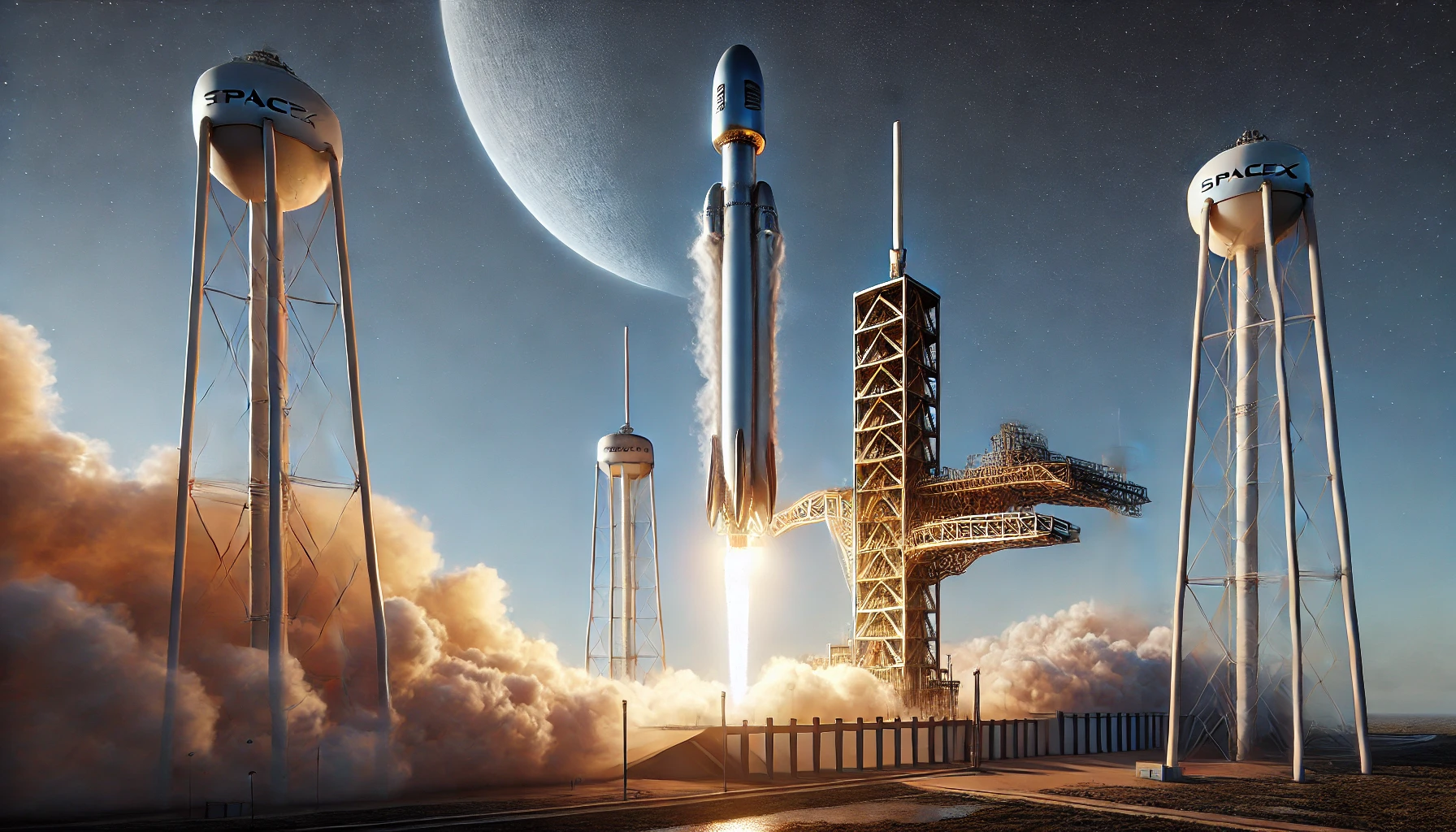Physical Address
304 North Cardinal St.
Dorchester Center, MA 02124
Physical Address
304 North Cardinal St.
Dorchester Center, MA 02124

On March 6, 2025, SpaceX Starship Flight 8 launched from Starbase, South Texas, testing booster reusability, the Super Heavy chopstick catch, and the Ship stage’s performance. The Super Heavy booster successfully landed using the launch tower’s chopstick arms, a major step toward reusable rockets and cost-effective space travel. However, the Ship stage encountered issues, including engine failures and loss of contact, leaving questions about its dummy Starlink satellite deployment and Indian Ocean splashdown. Did Starship Flight 8 succeed? Read our full breakdown, analysis, and future outlook on SpaceX’s journey toward deep space travel, the Moon, and Mars.
On March 6, 2025, SpaceX conducted the eighth test flight of Starship and Super Heavy, marking another crucial step toward fully reusable rockets designed for deep space travel, Moon missions, and Mars colonization. The launch took place at 3:30 p.m. PST from Starbase, South Texas, amidst much anticipation from space enthusiasts and industry experts worldwide.
The Starship Flight 8 mission aimed to test several key advancements, including:
The Starship Flight 8 launch was part of SpaceX’s broader iterative testing strategy—an approach that prioritizes continuous improvement through real-world trial and error. This flight, following multiple delays from February 28 to March 5, finally lifted off at 3:30 p.m. PST under mostly clear skies.
Unlike traditional expendable rocket models, Starship and Super Heavy represent a paradigm shift in spaceflight economics, with full reusability reducing launch costs, turnaround times, and payload inefficiencies. SpaceX aims to eventually make Starship the backbone of space transportation, from NASA’s Artemis program to future Mars missions.
One of the most anticipated aspects of this flight was whether the Super Heavy booster could be successfully caught by the launch tower—a feat attempted in previous test flights but never achieved at this scale. The booster successfully separated from the Ship stage as planned and executed its precision descent back toward Starbase.
Using grid fins for aerodynamic control, the Super Heavy booster aligned itself for a guided descent, eventually being caught mid-air by the launch tower’s massive chopstick arms. This successful catch is a huge win for SpaceX’s long-term goal of eliminating ocean landings and ensuring rapid reusability without costly refurbishment or retrieval operations.
Capturing the booster in mid-air rather than relying on droneships or ocean landings has significant implications:
The booster catch was the most successful aspect of Flight 8, demonstrating that SpaceX is one step closer to full reusability for both stages of Starship.
While the booster’s return to Starbase was a resounding success, the Ship stage faced significant challenges. During ascent, reports indicate that:
To understand the importance of these anomalies, it’s helpful to compare Flight 8 with past Starship launches:
| Flight | Booster Recovery | Ship Stage Performance | Mission Outcome |
|---|---|---|---|
| Flight 5 | First booster catch attempt | Ship exploded after engine failure | Partial success |
| Flight 6 | Booster landed but not caught | Ship reached orbit but suffered damage | Partial success |
| Flight 7 | Booster landed safely | Propellant leak caused Ship explosion | Failure |
| Flight 8 | Booster successfully caught | Ship lost contact, engine failures reported | Partial success |
While losing the Ship stage is not ideal, SpaceX’s iterative approach allows them to rapidly improve designs. The company will likely analyze the telemetry data to ensure future flights improve ascent stability, payload deployment reliability, and controlled reentry procedures.
SpaceX’s ultimate vision is to make life multi-planetary, and achieving full reusability is the key to making Mars colonization financially and logistically possible.
Key benefits of a reusable Starship system:
The successful booster catch in Flight 8 proves that SpaceX is solving half the equation. The next challenge will be ensuring the Ship stage achieves full reusability, including controlled landings, proper payload deployment, and avoiding engine failures during ascent.
The NASA Artemis program has selected Starship as the primary lander for returning humans to the Moon. This means SpaceX must perfect the Ship stage’s performance to ensure safe and repeatable lunar landings.
If Starship achieves operational readiness, we could see:
Despite the challenges faced by the Ship stage, Flight 8’s booster recovery proves that SpaceX is making significant progress. Future flights will likely focus on:
Flight 9 could include:
The Starship Flight 8 mission was a milestone event, with the booster catch marking a historic step in rocket reusability. However, issues with the Ship stage highlight the challenges SpaceX still faces in achieving full mission success.
As SpaceX continues its iterative testing approach, the company remains on track to revolutionize space travel. Whether it’s supporting NASA’s Artemis program, launching Starlink satellites, or preparing for Mars, the Starship system is the most ambitious rocket ever developed.
With Flight 9 and beyond, the next few years will determine if SpaceX can turn its vision into reality—ushering in a new era of interplanetary exploration and commercial space travel.